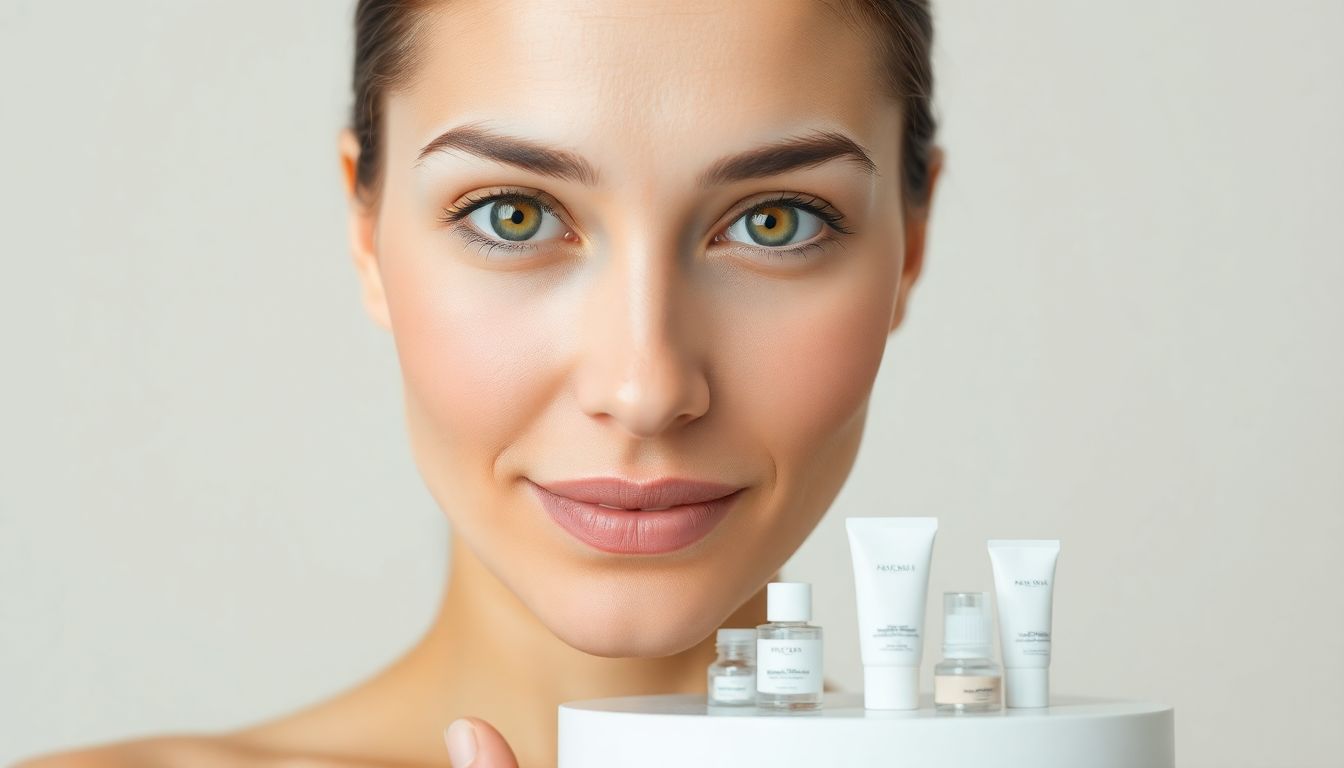
Acne affects millions of people worldwide. It's not just a teenage issue; adults also face this skin challenge. The right treatment can make a difference, but with so many options, how do you choose?
>The Acne Struggle Is Real
The Prevalence of Acne: Shocking Statistics
Did you know that around 85% of people between the ages of 12 and 24 experience acne? (Source: American Academy of Dermatology) This statistic highlights how common this skin condition is.
The Emotional Toll of Acne: Beyond the Surface
Acne can significantly impact mental health. Many individuals report feeling embarrassed or anxious because of their skin. For instance, one survey revealed that acne affected people's social lives, leading to low self-esteem and withdrawal from activities (Source: Skin Cancer Foundation).
This Guide: Your Path to Clear Skin
This guide will help you navigate acne treatment products, understand your skin, and build a routine that suits your needs.
Understanding Your Acne Type
Acne Vulgaris: A Closer Look
Acne vulgaris is the most common type. It includes various forms:
- Blackheads: Open pores filled with oil and dead skin.
- Whiteheads: Closed clogged pores.
- Papules: Small, red bumps.
- Pustules: Red bumps with pus.
- Nodules: Large, painful lumps.
- Cysts: Deep, painful lumps filled with pus.
Images of each type would be helpful here.
Identifying Your Specific Acne Triggers
Common triggers include:
- Diet: High in sugar or dairy.
- Stress: Emotional pressure can exacerbate acne.
- Hormonal changes: Menstrual cycles or acne medications.
- Skincare products: Heavy makeup or oily products.
Keeping a skin journal can help identify what affects you the most. Write down what you eat, your stress levels, and any products you use.
Consult a Dermatologist: When to Seek Professional Help
If your acne is severe or does not improve with over-the-counter treatments, schedule a visit with a dermatologist. They can provide a tailored treatment plan.
Over-the-Counter (OTC) Acne Treatments
Benzoyl Peroxide: The Powerhouse Ingredient
Benzoyl peroxide targets bacteria and reduces inflammation. It's available in various forms like gels and creams. Recommended products include:
- Neutrogena On-the-Spot Acne Treatment
- Clearasil Ultra Acne Treatment Cream
Salicylic Acid: Exfoliation for Clear Skin
Salicylic acid exfoliates and helps unclog pores. It's effective for treating mild to moderate acne. Here are some popular options:
- Paula's Choice Skin Perfecting 2% BHA Liquid
- Clean & Clear Advantage Acne Spot Treatment
Other OTC Options: Retinoids, Sulfur, etc.
Other ingredients to consider:
- Retinoids: Help skin renew itself but may cause dryness.
- Sulfur: Drys out the surface of the skin, reducing acne.
Always read labels and start slowly to gauge your skin’s reaction.
Prescription Acne Treatments
Retinoids: A Dermatologist's Go-To
Retinoids, such as tretinoin or adapalene, improve skin cell turnover. They can treat severe acne effectively. Potential side effects include irritation, redness, and peeling.
Antibiotics: Targeting Acne-Causing Bacteria
Topical and oral antibiotics help reduce acne-causing bacteria. While they can be effective, prolonged use may lead to antibiotic resistance.
Isotretinoin (Accutane): A Powerful Last Resort
Isotretinoin is effective for severe acne that doesn’t respond to other treatments. It requires careful monitoring and may cause side effects like dry skin and eyes. Only consider this option when other treatments fail.
Lifestyle Changes for Clearer Skin
Diet and Nutrition: What to Eat and Avoid
Certain foods may worsen acne. Limit:
- Sugary snacks and drinks
- Dairy products
Focus on:
- Leafy greens
- Omega-3 fatty acids
- Nuts and seeds
Stress Management Techniques for Improved Skin
Managing stress is essential. Techniques include:
- Mindfulness
- Meditation
- Yoga
Chronic stress can lead to increased oil production and trigger acne (Source: Healthline).
Sleep Hygiene: The Importance of Restful Sleep
Quality sleep plays a crucial role in skin health. Lack of sleep can worsen inflammation and lead to breakouts (Source: National Sleep Foundation). Aim for 7-9 hours of good rest each night.
Building a Personalized Skincare Routine
Gentle Cleansing: The Foundation of Clear Skin
Start with a gentle cleanser to remove dirt and oil. Recommended options:
- CeraVe Hydrating Facial Cleanser
- La Roche-Posay Toleriane Purifying Foaming Cleanser
Cleanse twice daily for the best results.
Moisturizing: Hydration for Healthy Skin
Even oily skin needs moisture. Look for non-comedogenic moisturizers to hydrate without clogging pores. Suggested products include:
- Neutrogena Hydro Boost Gel-Cream
- Clinique Dramatically Different Moisturizing Gel
Sunscreen: Protecting Your Skin from Damage
Daily sunscreen is a must, even on cloudy days. It protects against UV rays and prevents skin damage. Recommended sunscreens:
- EltaMD UV Clear Broad-Spectrum SPF 46
- La Roche-Posay Anthelios Melt-in Milk Sunscreen
Conclusion: Your Journey to Clear Skin Begins Now
Key Takeaways: Actionable Steps for Acne Management
- Understand your acne type and triggers.
- Utilize OTC treatments like benzoyl peroxide and salicylic acid.
- Consider lifestyle changes, including diet and stress management.
- Build a personalized skincare routine.
Take the first step toward clear skin today. Consult with a dermatologist for tailored advice, and explore available treatments to find what works best for you.
